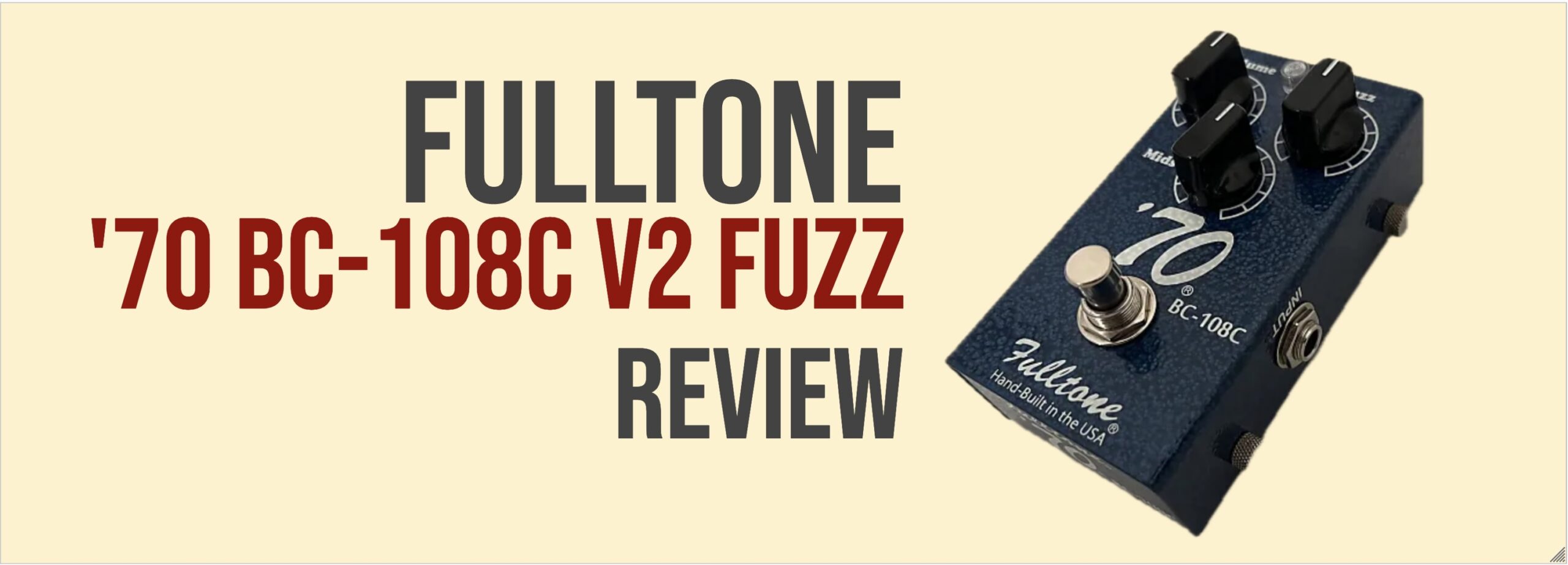
By Ian Waters
Posted 05/16/2025
Fulltone ’70 Fuzz V2
The Fulltone ’70 Fuzz V2 is a modern take on a vintage classic that delivers glassy single-coil presence to full on broken amplifier magic in one powder coated, wallet-friendly package. This silicone smiley face impersonator comes from Fulltone’s legacy of making classic circuits at an affordable price. We ran it through its paces into a silverface Fender amp using a Telecaster, a Les Paul, and a Stratocaster. In a world of boutique and big box corporation clones, Fulltone earns its reputation for quality and quantity with its ’70 Fuzz V2 by making a solid silicone fuzz in homage to an era-specific classic that helped define a generation of guitar records.
Layout & Design
Fulltone made its name by being one of the first boutique pedal designers to become world famous, making classics like the [hyperlink] OCD that became ubiquitous. In doing so, the company made several versions of the same design, such as the original Dallas Arbiter Fuzz Face (DAFF), which was one of the first fuzz pedals that used different circuitry over the years. In the ’70 Fuzz V2, the second version of a successful design by Fulltone, we see the use of two mismatched silicon transistors that reference later designs of the Fuzz Face.. The ’70 V2, despite using a more stable silicon-based circuit, claims to still be somewhat unpredictable and unwieldy on purpose. The mismatched circuit is tuned to be an aggressive, almost gated fuzz that, like silicon is known to do, allows for trembly, glassy sounds that can become harmonically rich, nasty, and loud. “You want polite and quiet? Go elsewhere. You want art in a box? Come on in,” Fulltone says.
Where Fulltone deviates from the original simple two knob design is by employing a mids control. We found this to be a second gain staging parameter, and when looping or playing in a mix, this helps address the most common downside of any fuzz pedal, which is getting lost in the mix. The mids control adds a top end boost that does in fact cut well. This also allows for otherwise dark or muddy sounding humbuckers to shine in territory usually delegated to the articulation capability of single-coils. The Les Paul does convincing germanium, “Satisfaction”-like single note lines and, when working its volume knob, can even do double line overdriven and single-coil-like clean lines well. The ’70 shines when using the Tele or Strat with some reverb and can dial in the classic sounds of Gilmour and Hendrix convincingly.
Who It’s For
While not an exact clone, the ’70 covers the ground of the later era DAFF convincingly and without the large space requirement of the original round face design. And, like other mass produced pedal clones, the price point is very affordable, pricing between $100 and $200 used and new. For the purist looking for the simplicity and authenticity of the simple original hand-wired circuits, this may not cut it. Boutique builds priced at high dollar amounts [hyperlink Isle of Tone] that promise completely accurate replicas may also come with limitations that the modern guitarist may not want, such as lack of eq control and general affordability. The ’70 is a great option for a player wanting a well-built silicon based FF style pedal but doesn’t want the price or hassle of a real vintage one or its modern high end replications. For those looking for classic glassy punch and raucous spit that won’t ask too much of the pedal board – or wallet – the Fulltone ’70 V2 is an excellent option.
